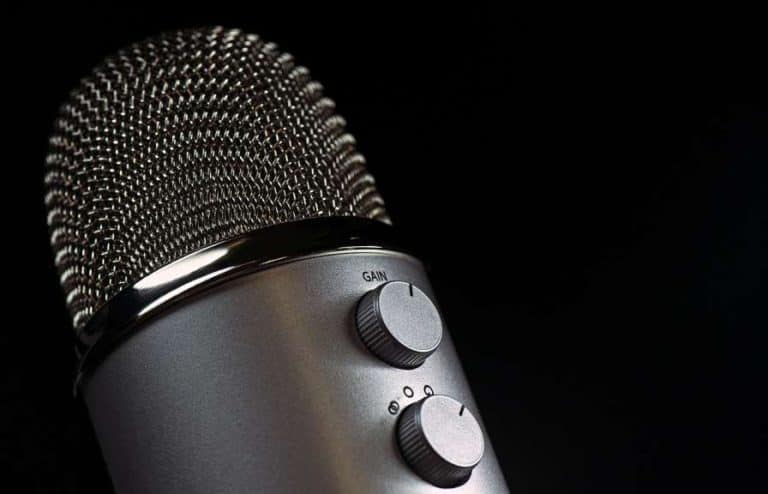A 9 Step Guide to Using Humor in Speeches
During a presentation, small touches of humor, added to the main subject, can attract and captivate your audience, helping, including forming ideas of people who are participating.
Compelling speakers don’t tell jokes to get laughs. Instead, they use humor to illustrate their message; in this article, we will give you some tips to help you include and understand the importance of humor in your speeches.
Highly Recommended Articles:
5 Top Qualities of Effective and Memorable Speakers
Entertaining Speeches: How to Give one and Examples of Topics
A 9 Step Guide to Using Humor in Speeches
1. Don’t bet it all at first
Under the justification of “breaking the ice,” there are those who sketch some classic joke in the first seconds of the presentation. Unfortunately, if you are adept at this practice, red light, this strategy can lead to a scenario of perverse self-sabotage.
At the beginning of the presentation, the adrenaline levels tend to be higher, and the insecurity is latent. Because of this, if the audience’s reaction to playing is frustrating right away, all of their strategies to captivate it may be compromised.
“If the joke isn’t funny, you’ll be destabilized. Prefer to leave the more classic jokes to the middle of the presentation, when your security is already consolidated.”
Reinaldo Polito in How to Conquer and Influence People
But if you are perceived as a humorous person and feel able to use humor, take your chances. If you make that decision, don’t forget that there are key moments to use humor, usually during the introduction or completion of your speech.
2. Observe and write down
Start by paying attention to the things that make you laugh; observe the world around you in search of funny moments, and in this way, you will find countless ways to use humor.
Every time you think or notice something fun that might be useful, write it down somewhere, whether on your phone or a piece of paper, so you don’t forget it later.
3. Be natural
One of the most important things when using good humor is to use it naturally. If you have a more severe and formal speech, making a very stripped-down speech might not go over well.
In such cases, prefer to play subtle games that can be processed quickly to go ahead with the core issue; if your speech is more informal and relaxed, let your speech flow and wait for the right moment.
4. Use Pauses and tone of voice
Pause and tone of voice during a speech make all the difference; a suitable delay helps to create curiosity in the audience. And then, when you’re finishing a sentence, use the voice intonation to make a significant impact.
Rhythm, intonation, and pauses are critical elements that can make the mood take off or sink, and mastering them in a specific story requires trial and error. So don’t risk using humor in an entire audience before being sure that you will present it well, based on numerous essays.
This combination creates emphasis on speech and greater public involvement. So you can also give people time to laugh and enjoy the moment.
5. Juggle with the negative
If you’re in a difficult situation, with something on your shirt or somehow getting the audience’s attention for something other than your story, learn how to use it to your advantage.
Reverse this situation and take advantage of your own mistakes to make people laugh. Self-mocking adverse events can help you, but you need sensitivity to do it at the right time.
Charlie Chaplin once said:
“to make people laugh, you need to know how to take your pain and play with it.”
6. Consider your qualities
Humor should be naturally used in oratory, so if that’s not your speaking style, trying to force it can make the moment awkward. That’s because humor and play need to be aligned with your tone of voice, posture, and body language.
If you want to develop this skill, start by training in front of the mirror, with family and friends, until it becomes natural.
Even if humor is not a natural skill for you, you can develop it through training and practice; so if you want to have a more cheerful and relaxed speech, start working on it.
7. Take into account the culture of the public.
To make a presentation without analyzing, in detail, the characteristics of the audience; before making a presentation, you need to look very carefully at your audience. Imagine arriving and finding all the local people with their arms crossed and their faces closed.
The joke you were preparing may be funny to your friends, but it will not always have the same reaction to your company’s speech delivery; for example, geographical and cultural differences also weigh as a mood thermometer.
The more you know about your audience, the more refined your mood can be. So, find out everything you can about demographic composition, interests, political leanings, favorite teams – absolutely everything you can get.
Each group or organization has its history, which can be studied, procedures, rituals, and specific individuals can be fertile soil for humor.
8. Be clear with gestures or facial expressions.
After finishing a funny comment, it is unnecessary to justify yourself with the classic phrase: “It was a joke” or the variant “prank.” Instead, according to Reinaldo Polito, the way to sharpen the content of your body expressions should make it clear that this is a joke.
The audience needs to make sure you’re not serious; according to the expert, the idea is to intensify this the lower the level of instruction of the audience.
9. Don’t run away from the context of your presentation
As we mentioned in earlier paragraphs, humor only has the desired effect if people understand the irony and comical tenor of what is being said. Even if the public does not know that this is a comic excerpt, it may draw literal conclusions about what is being said, harming the communicator’s image.
For humor to be, in fact, understandable, avoid running away from the topic. It is useless to interrupt your speech and tell a random joke. Instead of retaining the public’s attention, you, the communicator, will be interrupting a thought and sabotaging your speech.
-
8 THINGS YOU CAN DO TO ACE ANY JOB INTERVIEW

The happiness when receiving a call marking the job interview gives rise to endless anxiety. After all, it’s only a few minutes to prove your worth, impress the recruiter and seize the opportunity. However, to do well at the job interview, you need to think about what you will say, how you will present yourself,…
-
An Easy Guide to All 15 Types of Speech

We keep learning that there are three types of speeches, informative speeches, persuasive speeches and special occasion speeches. However, I believe and know that there are many more such as debates, motivational speeches, forensic speeches, impromptu speeches, eulogy, and so on. Here’s a growing list of over 13 types of speech and tips on how…
HOW CAN I HAVE A SUCCESSFUL SPEECH USING HUMOR?
A successful speech using humor depends on your ability to handle comic material in the best possible way; how often have you heard a person tell a long, complicated joke to swallow the ending and ruin the story? The same thing can happen with a short joke or even with a tirade.
Jokes and anecdotes are just the raw material; they need to be crafted to fit perfectly into your speech. And most importantly, they have to be relevant to the general sense of their presentation.
Is there an ideal audience for a humorous oratory?
A technical presentation may not be a subject for jokes, but the audience may need a few laughs precisely because of the barren nature of the issue. With practice and experience, one can learn to properly evaluate each area, and as a result, his/her speaker stature will grow.
3 Basic Principles to keep in mind when using Humor in Speeches:
- First, making sure the joke is appropriate to the situation and actually funny. If the speaker does not think something is funny, then it can’t be expected that the public will find it interesting;
- Second, before employing humor in a speech, test, or rehearse with friends or a small group of people. Even if the experiment doesn’t work right away, don’t give up too quickly; It may take some time for you to feel comfortable with a story. It would be best if you used humor in a speech only after you get it done calmly and after testing it several times;
- Third, make sure the humor is related to the content of your presentation; humor should not be an end in itself; Making your audience laugh is a good thing, but it is not the reason why you stand before it; if you don’t tie humor to the main subject, the audience might laugh, but they’ll be wondering what you mean.
Conclusion
When we have been invited to inform and instruct an audience, we may likely need/want to entertain them because in doing so, you will have more success in our main task, which is to deliver a speech.
However, we forget that humor is not the end in itself; it has to reinforce why we are in front of the audience, and our presentation has to show that we understand that.
Reference and Further Reading
Frantically Speaking. A Guide to Using Humor in your Speech.









